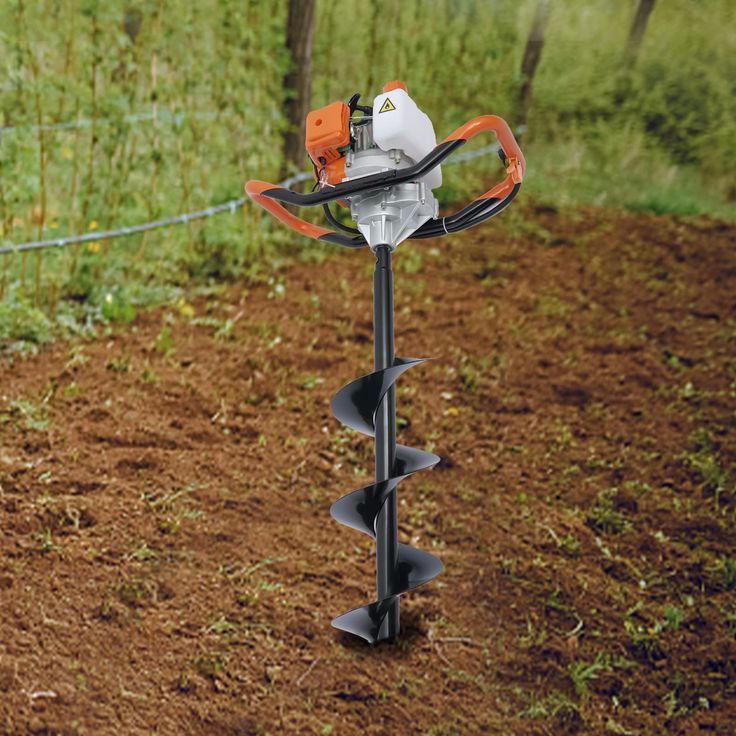Precision agriculture has emerged as a cornerstone of modern farming, marrying data-driven insights with innovative equipment to optimize yield, minimize waste, and enhance sustainability. In this technologically sophisticated landscape, one unsung hero has consistently proven its merit—the earth auger. From orchard plantations to fencing installations, the earth auger has redefined the scope and speed of land preparation.
With the digital revolution in agriculture accelerating, tools like earth augers are no longer confined to large-scale operations. They are now accessible to every Kisan, thanks to intuitive Agri apps that connect farmers to the tools and resources they need. For instance, the Agribegri app enables seamless procurement of agricultural machinery, making it a pivotal platform for land preparation strategies.
As the farming sector embraces automation, AI, and mechanization, it’s imperative to understand how integrating the right tools—especially something as seemingly simple as an auger—can drastically elevate productivity.
Earth Auger Demystified: An Engineering Marvel for Soil Penetration
At its core, an earth auger is a drilling apparatus composed of a helical screw blade (or flighting) mounted onto a rotating shaft. When powered—manually or by engine—it burrows into the soil with remarkable precision, creating clean, cylindrical holes ideal for planting, pole installation, or irrigation channeling.
Optimal Usage Scenarios
- Plantation pits for orchards like mango, guava, or citrus.
- Boreholes for fencing poles or drip irrigation setups.
- Soil sampling for agronomic research or AI-based yield prediction.
Structural Composition
- Flighting: Usually forged from tempered alloy steel for longevity.
- Power source: Ranges from manual (hand-held) to petrol, diesel, and electric motors.
- Diameter versatility: Available in various drill sizes from 4 inches to 12 inches, catering to specific agronomic needs.
The tool’s operational versatility makes it a mainstay in any precision-farming arsenal. However, the auger isn’t without limitations; it’s less efficient in highly rocky or marshy terrains where blade obstruction or mechanical malfunction is probable.
Tactical Advantages: Augers as Enablers of Precision Agriculture
The transition from rudimentary digging tools to earth augers is not merely about convenience—it’s a strategic pivot toward agro-efficiency. In precision agriculture, timing, spacing, and uniformity are everything. The auger enables:
- Consistent pit depth and diameter, ensuring homogeneous root expansion and moisture absorption.
- Rapid deployment, drilling up to 400 pits in under three hours with a petrol-powered model.
- Enhanced soil health, due to reduced mechanical compaction compared to traditional digging.
According to the National Institute of Agricultural Engineering, farms that incorporated augers into their land preparation processes reported a 65% reduction in manual labor dependency and a 30% increase in planting accuracy, both of which directly influence crop viability.
Auger + AI = The New Frontier of Farming Intelligence
The integration of AI-driven analytics and physical tools like earth augers represents a compelling synergy. With Agri apps and digital platforms like khedut app, farmers receive geo-tagged soil fertility data, micro-climatic updates, and planting schedules customized to their region and crop type.
Imagine a scenario where a farmer receives a notification from their agri dashboard recommending the optimal planting depth for papaya saplings based on moisture readings and sun exposure. That exact depth can then be achieved flawlessly using a calibrated auger attachment.
This fusion creates a closed-loop farming system where data leads to action, and action feeds back into refined insights. It’s an ecosystem that empowers farmers with:
- Predictive intelligence for planting decisions.
- Mechanized execution for immediate results.
- Post-operation data analysis for yield refinement.
“Farming intelligently isn’t about doing more; it’s about doing the right things with greater accuracy.”
Social and Economic Impact on the Kisan Community
Beyond agronomic precision, the adoption of tools like earth augers has sociocultural ramifications. In regions where agriculture is often perceived as laborious and unrewarding, mechanization rejuvenates the narrative. Youth are more inclined to stay in the sector when the work becomes more technical and less strenuous.
Moreover, the financial outlay for an auger, when amortized over a growing season, is minimal compared to labor wages and time losses. This cost-effectiveness is vital for smallholder farmers, who constitute nearly 82% of India’s farming demographic.
Rare term spotlight: The “Agro-Digitaria Leap” refers to the phenomenon where handheld digital devices (phones, tablets) and mechanized tools (like augers) together propel small-scale farmers into technologically-empowered producers.
Discerning the Drawbacks: When Not to Use an Earth Auger
Despite their utility, earth augers are not universally applicable. Recognizing operational constraints is critical to tool longevity and efficiency. Avoid using augers in:
- Highly rocky substrata, which may damage blades or overheat the motor.
- Excessively wet conditions, leading to suction clog and power loss.
- Root-heavy areas, where entanglement can cause mechanical stress.
In such cases, alternate methods such as trenchers or manual labor might be better suited. The key is knowing when technology augments and when tradition prevails.
Building a Year-Round Preparation Strategy
Preparation isn’t a one-time event. As seasons change, land preparation needs shift too. The earth auger fits seamlessly into different cycles:
- Pre-Kharif: Drilling pits for deep-rooted summer crops.
- Post-Rabi: Orchard preparation or irrigation installations.
- Off-season: Soil aeration and testing for AI-input calibration.
The Informed Farmer’s Advantage
In today’s evolving agri-economy, Kisan are not just cultivators—they are data interpreters, mechanical operators, and ecosystem stewards. They understand that soil isn’t just something to be dug—it’s a medium of growth that deserves calibrated, respectful handling.
With the right fusion of khedut app-based insights, precision implements like the earth auger, and AI-powered decision-making, farmers can finally move from reactive agriculture to proactive cultivation. This transition fosters resilience, scalability, and higher returns.
The earth auger is no longer an optional tool; it’s a strategic asset in the modern farmer’s kit.



